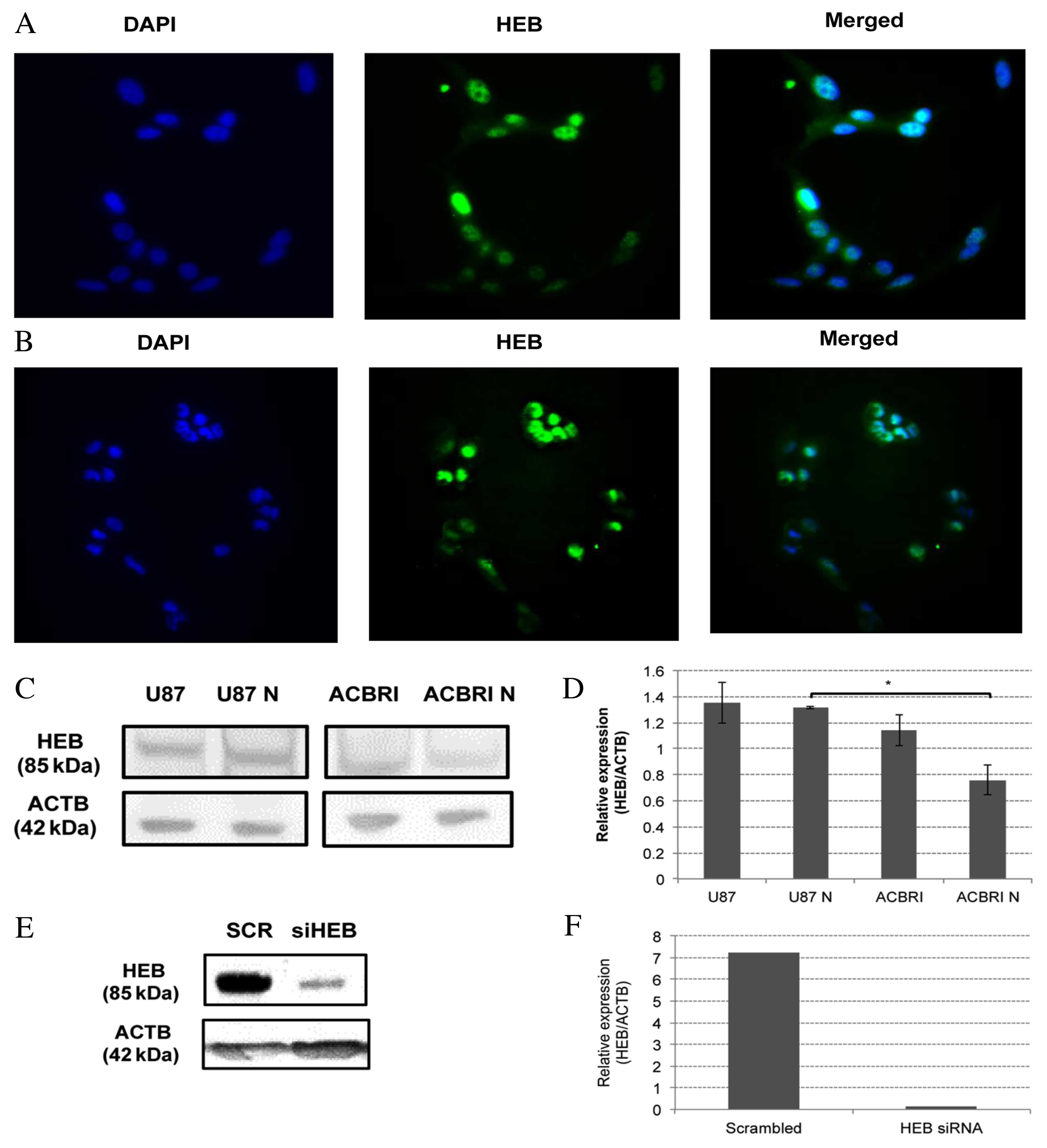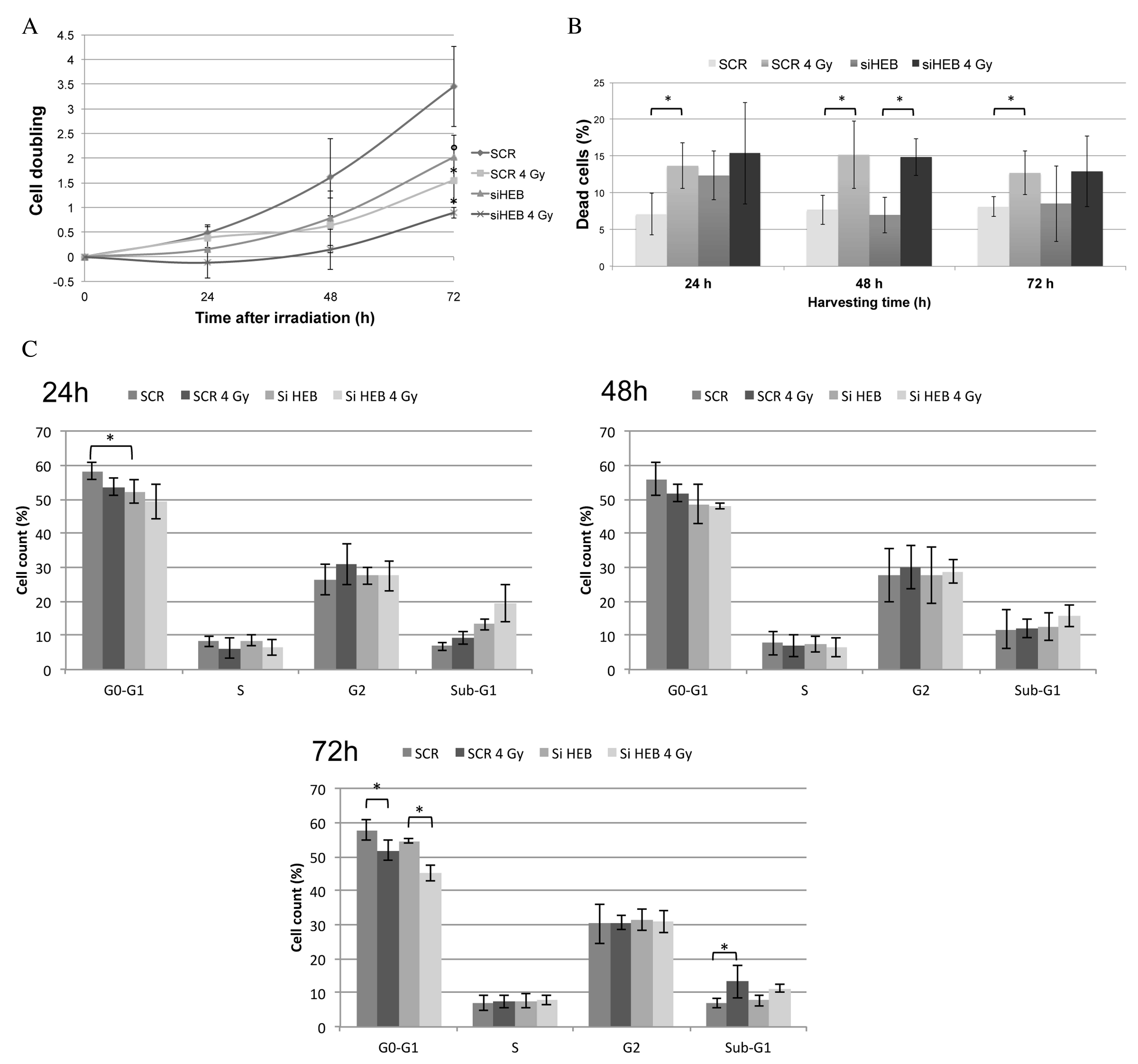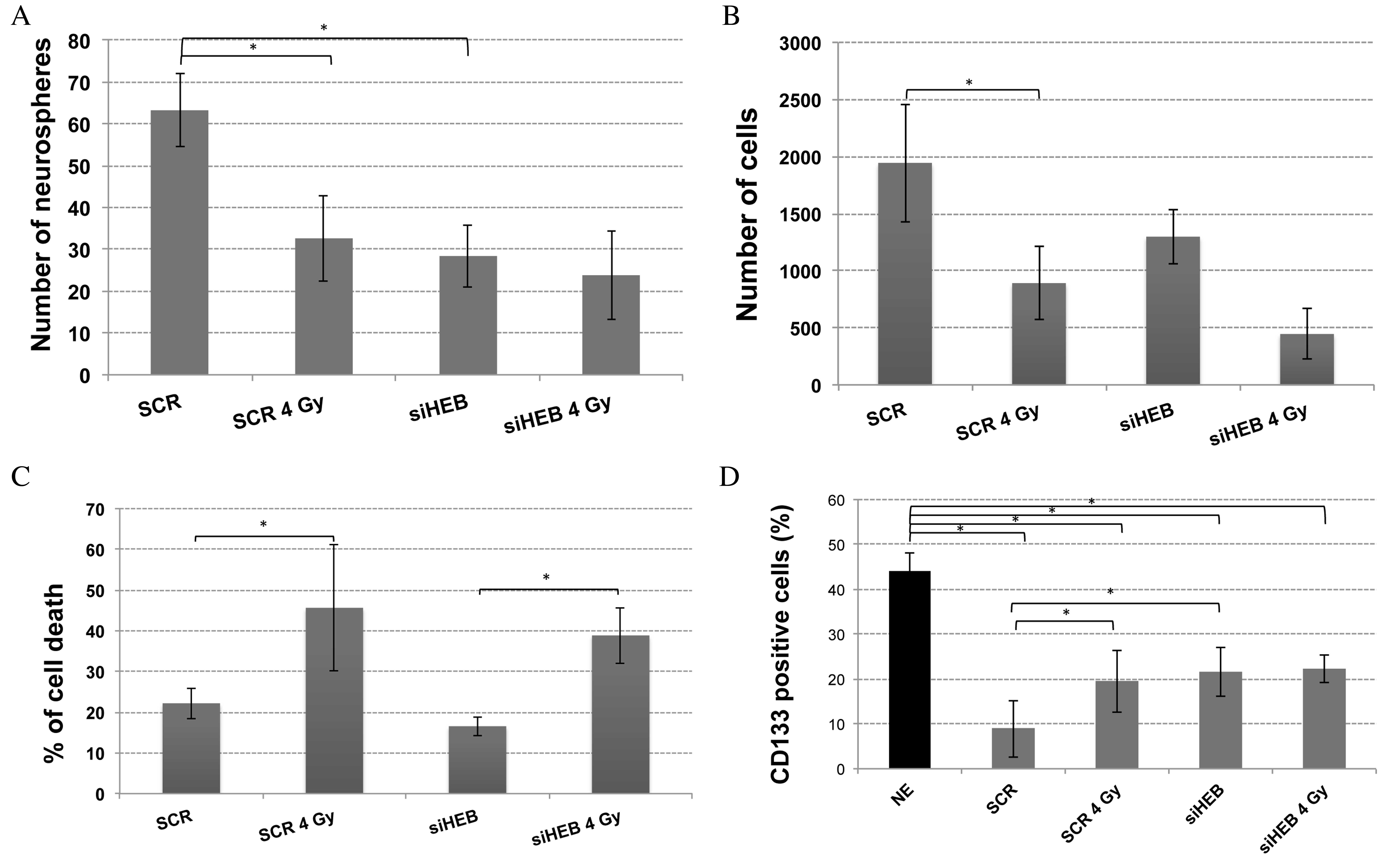|
1
|
Ohgaki H and Kleihues P: Population-based
studies on incidence, survival rates, and genetic alterations in
astrocytic and oligodendroglial gliomas. J Neuropathol Exp Neurol.
64:479–489. 2005. View Article : Google Scholar : PubMed/NCBI
|
|
2
|
Stupp R, Mason WP, van den Bent MJ, Weller
M, Fisher B, Taphoorn MJ, Belanger K, Brandes AA, Marosi C, Bogdahn
U, et al: Radiotherapy plus concomitant and adjuvant temozolomide
for glioblastoma. N Engl J Med. 352:987–996. 2005. View Article : Google Scholar : PubMed/NCBI
|
|
3
|
Chen J, McKay RM and Parada LF: Malignant
glioma: Lessons from genomics, mouse models, and stem cells. Cell.
149:36–47. 2012. View Article : Google Scholar : PubMed/NCBI
|
|
4
|
Ohgaki H: Genetic pathways to
glioblastomas. Neuropathology. 25:1–7. 2005. View Article : Google Scholar : PubMed/NCBI
|
|
5
|
da Silva GN, Evangelista AF, Magalhães DA,
Macedo C, Búfalo MC, Sakamoto-Hojo ET, Passos GA and Salvadori DM:
Expression of genes related to apoptosis, cell cycle and signaling
pathways are independent of TP53 status in urinary bladder cancer
cells. Mol Biol Rep. 38:4159–4170. 2011. View Article : Google Scholar : PubMed/NCBI
|
|
6
|
Godoy PRDV, Mello SS, Magalhães DAR,
Donaires FS, Montaldi APL, Nicolucci P, Donadi EA, Passos GAS and
Sakamoto-Hojo ET: Portrait of transcriptional expression profiles
displayed by different glioblastoma cell linesMolecular Targets of
CNS Tumors. Garami M: 1. InTech; Rijeka: pp. 265–288. 2011
|
|
7
|
Godoy PR, Mello SS, Magalhães DA, Donaires
FS, Nicolucci P, Donadi EA, Passos GA and Sakamoto-Hojo ET:
Ionizing radiation-induced gene expression changes in TP53
proficient and deficient glioblastoma cell lines. Mutat Res.
756:46–55. 2013. View Article : Google Scholar : PubMed/NCBI
|
|
8
|
Otomo T, Hishii M, Arai H, Sato K and
Sasai K: Microarray analysis of temporal gene responses to ionizing
radiation in two glioblastoma cell lines: Up-regulation of DNA
repair genes. J Radiat Res. 45:53–60. 2004. View Article : Google Scholar : PubMed/NCBI
|
|
9
|
Eyler CE and Rich JN: Survival of the
fittest: Cancer stem cells in therapeutic resistance and
angiogenesis. J Clin Oncol. 26:2839–2845. 2008. View Article : Google Scholar : PubMed/NCBI
|
|
10
|
Liu Q, Nguyen DH, Dong Q, Shitaku P, Chung
K, Liu OY, Tso JL, Liu JY, Konkankit V, Cloughesy TF, et al:
Molecular properties of CD133+ glioblastoma stem cells derived from
treatment-refractory recurrent brain tumors. J Neurooncol. 94:1–19.
2009. View Article : Google Scholar : PubMed/NCBI
|
|
11
|
Bao S, Wu Q, McLendon RE, Hao Y, Shi Q,
Hjelmeland AB, Dewhirst MW, Bigner DD and Rich JN: Glioma stem
cells promote radioresistance by preferential activation of the DNA
damage response. Nature. 444:756–760. 2006. View Article : Google Scholar : PubMed/NCBI
|
|
12
|
Singh SK, Clarke ID, Terasaki M, Bonn VE,
Hawkins C, Squire J and Dirks PB: Identification of a cancer stem
cell in human brain tumors. Cancer Res. 63:5821–5828.
2003.PubMed/NCBI
|
|
13
|
Singh SK, Hawkins C, Clarke ID, Squire JA,
Bayani J, Hide T, Henkelman RM, Cusimano MD and Dirks PB:
Identification of human brain tumour initiating cells. Nature.
432:396–401. 2004. View Article : Google Scholar : PubMed/NCBI
|
|
14
|
Rappa G, Mercapide J, Anzanello F,
Prasmickaite L, Xi Y, Ju J, Fodstad O and Lorico A: Growth of
cancer cell lines under stem cell-like conditions has the potential
to unveil therapeutic targets. Exp Cell Res. 314:2110–2122. 2008.
View Article : Google Scholar : PubMed/NCBI
|
|
15
|
Uittenbogaard M and Chiaramello A:
Expression of the bHLH transcription factor Tcf12 (ME1) gene is
linked to the expansion of precursor cell populations during
neurogenesis. Brain Res Gene Expr Patterns. 1:115–121. 2002.
View Article : Google Scholar : PubMed/NCBI
|
|
16
|
Xu YY, Gao P, Sun Y and Duan YR:
Development of targeted therapies in treatment of glioblastoma.
Cancer Biol Med. 12:223–237. 2015.PubMed/NCBI
|
|
17
|
Carminati PO, Donaires FS, Godoy PRDV,
Montaldi AP, Meador JA, Balajee AS, Passos GA and Sakamoto-Hojo ET:
DNA-PK is a potential molecular therapeutic target for
glioblastomaEvolution of the Molecular Biology of Brain Tumors and
the Therapeutic Implications. Lichtor T: InTech; Rijeka: pp.
459–480. 2013
|
|
18
|
Montaldi AP and Sakamoto-Hojo ET:
Methoxyamine sensitizes the resistant glioblastoma T98G cell line
to the alkylating agent temozolomide. Clin Exp Med. 13:279–288.
2013. View Article : Google Scholar : PubMed/NCBI
|
|
19
|
Montaldi AP, Godoy PR and Sakamoto-Hojo
ET: APE1/REF-1 down-regulation enhances the cytotoxic effects of
temozolomide in a resistant glioblastoma cell line. Mutat Res Genet
Toxicol Environ Mutagen. 793:19–29. 2015. View Article : Google Scholar : PubMed/NCBI
|
|
20
|
Mees C, Nemunaitis J and Senzer N:
Transcription factors: Their potential as targets for an
individualized therapeutic approach to cancer. Cancer Gene Ther.
16:103–112. 2009. View Article : Google Scholar : PubMed/NCBI
|
|
21
|
Sankpal UT, Goodison S, Abdelrahim M and
Basha R: Targeting Sp1 transcription factors in prostate cancer
therapy. Med Chem. 7:518–525. 2011. View Article : Google Scholar : PubMed/NCBI
|
|
22
|
Liu LY, Chang LY, Kuo WH, Hwa HL, Shyu MK,
Chang KJ and Hsieh FJ: In silico prediction for regulation of
transcription factors ontheir shared target genes indicates
relevant clinical implications in a breast cancer population.
Cancer Inform. 11:113–137. 2012.PubMed/NCBI
|
|
23
|
Godoy PRDV, Mello SS, Donaires FS, Donadi
EA, Passos GAS and Sakamoto-Hojo ET: In silico analysis of
transcription factors associated to differentially expressed genes
in irradiated glioblastoma cell linesEvolution of the Molecular
Biology of Brain Tumors and the Therapeutic Implications. Lichtor
T: InTech; Rijeka: pp. 577–600. 2013
|
|
24
|
Zhang Y, Babin J, Feldhaus AL, Singh H,
Sharp PA and Bina M: HTF4: A new human helix-loop-helix protein.
Nucleic Acids Res. 19:45551991. View Article : Google Scholar : PubMed/NCBI
|
|
25
|
Massari ME and Murre C: Helix-loop-helix
proteins: Regulators of transcription in eucaryotic organisms. Mol
Cell Biol. 20:429–440. 2000. View Article : Google Scholar : PubMed/NCBI
|
|
26
|
Sawada S and Littman DR: A heterodimer of
HEB and an E12-related protein interacts with the CD4 enhancer and
regulates its activity in T-cell lines. Mol Cell Biol.
13:5620–5628. 1993. View Article : Google Scholar : PubMed/NCBI
|
|
27
|
Wang D, Claus CL, Vaccarelli G, Braunstein
M, Schmitt TM, Zúñiga-Pflücker JC, Rothenberg EV and Anderson MK:
The basic helix-loop-helix transcription factor HEBAlt is expressed
in pro-T cells and enhances the generation of T cell precursors. J
Immunol. 177:109–119. 2006. View Article : Google Scholar : PubMed/NCBI
|
|
28
|
Hu JS, Olson EN and Kingston RE: HEB, a
helix-loop-helix protein related to E2A and ITF2 that can modulate
the DNA-binding ability of myogenic regulatory factors. Mol Cell
Biol. 12:1031–1042. 1992. View Article : Google Scholar : PubMed/NCBI
|
|
29
|
Conway K, Pin C, Kiernan JA and Merrifield
P: The E protein HEB is preferentially expressed in developing
muscle. Differentiation. 72:327–340. 2004. View Article : Google Scholar : PubMed/NCBI
|
|
30
|
Li Y, Yang J, Luo JH, Dedhar S and Liu Y:
Tubular epithelial cell dedifferentiation is driven by the
helix-loop-helix transcriptional inhibitor Id1. J Am Soc Nephrol.
18:449–460. 2007. View Article : Google Scholar : PubMed/NCBI
|
|
31
|
O'Neil J, Shank J, Cusson N, Murre C and
Kelliher M: TAL1/SCL induces leukemia by inhibiting the
transcriptional activity of E47/HEB. Cancer Cell. 5:587–596. 2004.
View Article : Google Scholar : PubMed/NCBI
|
|
32
|
Draheim KM, Hermance N, Yang Y, Arous E,
Calvo J and Kelliher MA: A DNA-binding mutant of TAL1 cooperates
with LMO2 to cause T cell leukemia in mice. Oncogene. 30:1252–1260.
2011. View Article : Google Scholar : PubMed/NCBI
|
|
33
|
Labreche K, Simeonova I, Kamoun A, Gleize
V, Chubb D, Letouzé E, Riazalhosseini Y, Dobbins SE, Elarouci N,
Ducray F, et al: TCF12 is mutated in anaplastic oligodendroglioma.
Nat Commun. 6:72072015. View Article : Google Scholar : PubMed/NCBI
|
|
34
|
Lee CC, Chen WS, Chen CC, Chen LL, Lin YS,
Fan CS and Huang TS: TCF12 protein functions as transcriptional
repressor of E-cadherin, and its overexpression is correlated with
metastasis of colorectal cancer. J Biol Chem. 287:2798–2809. 2012.
View Article : Google Scholar : PubMed/NCBI
|
|
35
|
Chen WS, Chen CC, Chen LL, Lee CC and
Huang TS: Secreted heat shock protein 90α (HSP90α) induces nuclear
factor-κB-mediated TCF12 protein expression to down-regulate
E-cadherin and to enhance colorectal cancer cell migration and
invasion. J Biol Chem. 288:9001–9010. 2013. View Article : Google Scholar : PubMed/NCBI
|
|
36
|
Riemenschneider MJ, Koy TH and
Reifenberger G: Expression of oligodendrocyte lineage genes in
oligodendroglial and astrocytic gliomas. Acta Neuropathol.
107:277–282. 2004. View Article : Google Scholar : PubMed/NCBI
|
|
37
|
Ajeawung N and Deepak Kamnasaran D: An
efficient approach to Enrich Glioma stem cells from Glioma cell
lines in culture. WebmedCentral ONCOLOGY. 1:WMC005572010.
|
|
38
|
Trimarchi JM and Lees JA: Sibling rivalry
in the E2F family. Nat Rev Mol Cell Biol. 3:11–20. 2002. View Article : Google Scholar : PubMed/NCBI
|
|
39
|
van Roy F and Berx G: The cell-cell
adhesion molecule E-cadherin. Cell Mol Life Sci. 65:3756–3788.
2008. View Article : Google Scholar : PubMed/NCBI
|
|
40
|
Kraus AC, Ferber I, Bachmann SO, Specht H,
Wimmel A, Gross MW, Schlegel J, Suske G and Schuermann M: In vitro
chemo- and radio-resistance in small cell lung cancer correlates
with cell adhesion and constitutive activation of AKT and MAP
kinase pathways. Oncogene. 21:8683–8695. 2002. View Article : Google Scholar : PubMed/NCBI
|
|
41
|
Hall EJ and Giaccia AJ: Radiobiology for
the Radiologist. 5th. Lippincott Williams & Wilkins;
Philadelphia, PA: pp. 5882000
|
|
42
|
Sussman CR, Davies JE and Miller RH:
Extracellular and intracellular regulation of oligodendrocyte
development: Roles of Sonic hedgehog and expression of E proteins.
Glia. 40:55–64. 2002. View Article : Google Scholar : PubMed/NCBI
|
|
43
|
Khan IS and Ehtesham M: Targeting
glioblastoma cancer stem cells: The next great hope? Neurosurgical
focus. 37:E72014. View Article : Google Scholar
|
|
44
|
Kang TW, Choi SW, Yang SR, Shin TH, Kim
HS, Yu KR, Hong IS, Ro S, Cho JM and Kang KS: Growth arrest and
forced differentiation of human primary glioblastoma multiforme by
a novel small molecule. Sci Rep. 4:55462014. View Article : Google Scholar : PubMed/NCBI
|
|
45
|
Low J, Blosser W, Dowless M, Ricci-Vitiani
L, Pallini R, de Maria R and Stancato L: Knockdown of ubiquitin
ligases in glioblastoma cancer stem cells leads to cell death and
differentiation. J Biomol Screen. 17:152–162. 2012. View Article : Google Scholar : PubMed/NCBI
|
|
46
|
Friedman MD, Jeevan DS, Tobias M, Murali R
and Jhanwar-Uniyal M: Targeting cancer stem cells in glioblastoma
multiforme using mTOR inhibitors and the differentiating agent
all-trans retinoic acid. Oncol Rep. 30:1645–1650. 2013.PubMed/NCBI
|

















